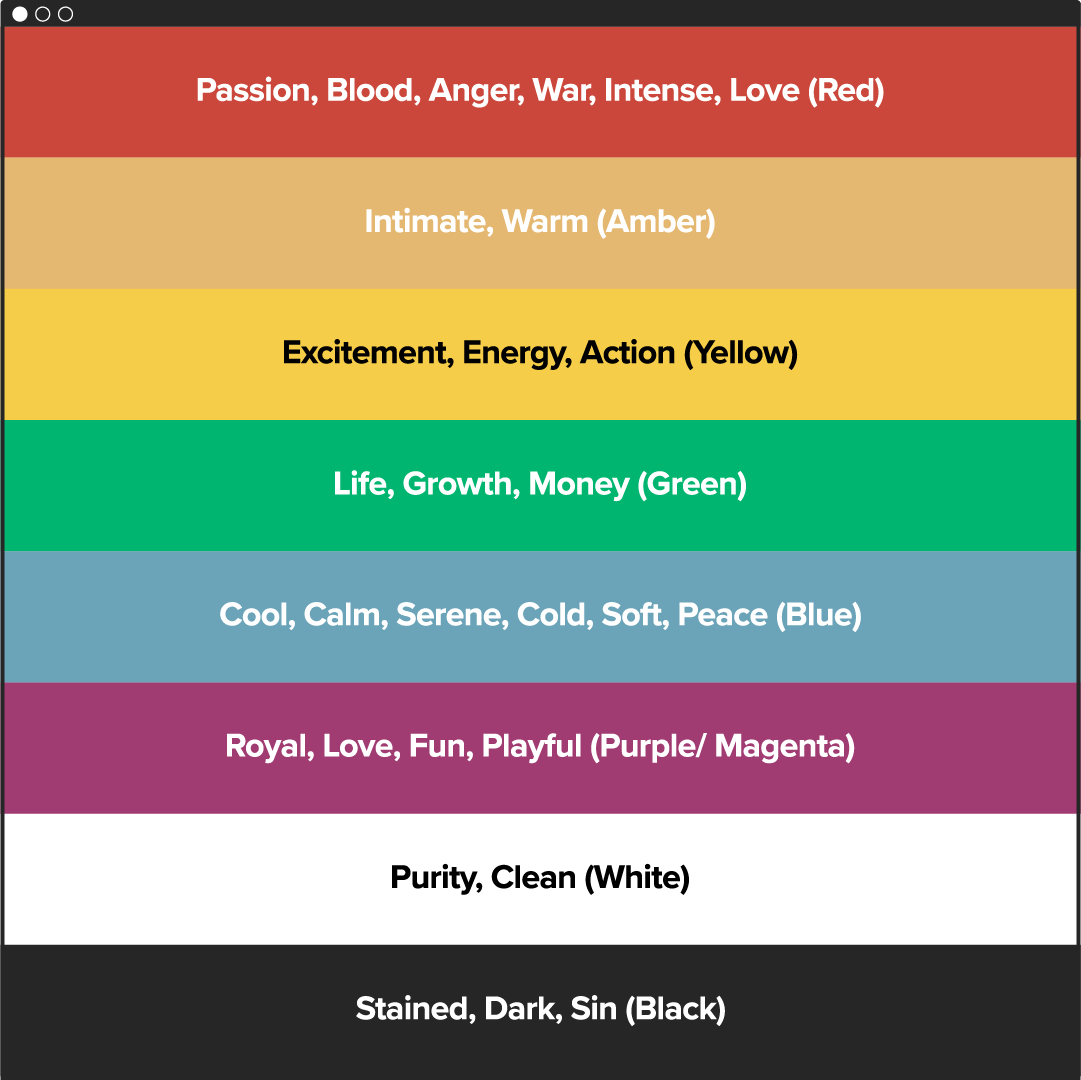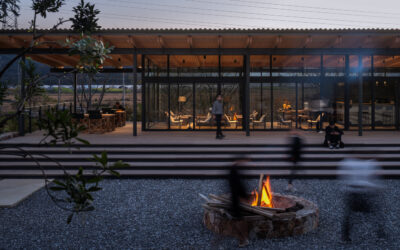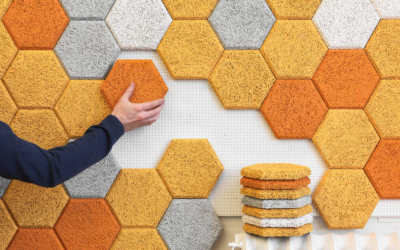NEWS
USAGE OF COLOR IN ARCHITECTURAL LIGHTING
One of the oft ignored components of architectural design is illumination and its ability to accentuate or even enhance an ambience. This field has very recently met a rising level of interest due to its wide applicability in architectural design and the level of expertise required in its specializations. Among these, includes the implementation of color within the architectural scheme of a project, potentially altering or boosting the look and feel of a design. This specialization, however, has been the source of controversy since there isn’t yet a consensus in how and when it should be utilized, leading to a wide range of results left to subjective tastes and interpretations.
A History
The field of colored lighting is currently undergoing its growing pains, seeing as it is still a very young area of expertise. Originally, the concept of colored lighting had a very limited application, being reserved mainly for either specific contexts or for exteriors. This originates from the difficulty of being able to create this effect; the predecessors of colored lighting consisted mainly of neon lights (which had their own sets of problems) or color filters, which severely limited its applicability. Then came the invention and ubiquity of the Light Emitting Diode (LED) units, which provide a simple access to all wavelengths in the visible light spectrum. Overnight, the possibilities for architectural lighting increased exponentially, leading to a boom in colored ambiences with seemingly no limitations. This sudden ubiquity of colored illumination, however, only served to highlight the inexperience inherent to this field and the lack of established guidelines for its architects.
Life and Emotion: The Benefits of Colored Lighting
With the advent of LED, it became possible to include in a project any color found in the visible spectrum, offering a plethora of benefits that were previously inaccessible for lighting designers:
- – Color Evokes Emotion: The only limitation for interior designers and architects are the colors outside the visible spectrum. Therefore, they have an ample choice of colors which can evoke the desired emotions specific to the space’s usage. A warm and eye-catching yellow can be used for restaurants, a soothing blue for spas, an exciting red for commercial spaces; the possibilities are endless.

- – Excitement and Vibrancy: The versatility of colored light can allow a space to come into life and exhibit a vibrancy that wouldn’t be possible otherwise. Previously neutral or dull spaces can be brought to life at a relatively minimal cost. The addition of light automation and LED’s versatility, also offers the ability to change light’s color and intensity at a whim, resulting in endless possibilities.
- – Architectural Exhibition: Building’s and interiors are simply another medium for artistic expression. As such, it is important to correctly exhibit a piece with an appropriate lighting that can either highlight or enhance it. This is colored lighting’s specialty, as the choice of a specific color can change the entire ambience of a project.



Light and Color: Fundamental Rules
When it comes to the artistic fields, while there are usually some basic rules that form the framework for the theoretical application, the accepted modus operandi tends to be susceptible to subjective tastes and changing currents. In Design Group Latinamerica, however, we have a few strict guidelines that must be followed in order to create an effective yet subtle colored lighting design:
- – A Perfect Complement: Colored light should be viewed as a complementary function, rarely to be pushed at the forefront of a design. The alternative requires a masterful and subtle hand, due to the ease in which the final result can be overly ostentatious or tacky. Since its erroneous usage can overwhelm its established design, it is better to reduce its overall role.
- – Replicating the Natural: For an architectural or interior design context, it is important to utilize only a specific selection of colors. From the CIF Color System, the ideal choice of colors is those in the lower half of the plotted area. This is due to the natural attributes of the human eye, which is more adept at discerning the frequencies belonging to the daylight spectrum.

CIF Color System
- – Warmth and Cold/Background and Foreground: There are established roles for warm and cold colors, where the former is used to highlight objects or elements in the foreground, while the latter is utilized more as a method to set an ambience. This is translated into the direct and diffused light dichotomy, where logically warmer colors are used for direct lighting and vice versa.
- – A Clean, Sober Design: Colored lighting provides a whole range of options and strategies; however, it is important to be prudent. It is tempting to use a wide range of colors or to even integrate some form of dynamic lighting, however these must be carefully considered before implementation and should be used sparingly.


Project Breakdown: Bar Kode

Being one of the main projects undertaken by Design Group Latinamerica that has integrated colored lighting, Bar Kode becomes an ideal case to analyze the concept and implementation of colored lighting. Originally as a gastropub (and later transitioning to a night club), the concept of Kode inherently requires a very specific ambience as well as flexibility in use. Entrepreneur, DGLA director and owner of Kode, Alessandro Casarin specifically states the importance and challenge of having adequate lighting. He states, “It was important to conceptualize Kode with a certain coziness while also emitting an aura of elegance and modernity, which could only be achieved with correct and tenuous usage of colored lighting. This would require a careful juxtaposition of both white and colored light, allowing them to bring out the best qualities in each other.”


Kode’s lighting setup also offers much versatility, seeing as the strategically placed LED strips can change the light’s color at will. “Originally, Kode was visualized as a gastropub that transitions towards a late-night establishment meaning that a gradual change in light intensity and color would be required. When Kode became a fully realized night club, the lighting was instead changed depending on the type and intensity of the music or to accommodate a variety of color-themed events,” Casarin states.
Casarin emphasizes the importance of diffused lighting, with direct lighting only used in certain areas of focus such as the bar or booths. “To achieve the ideal feel of the bar, LED strips were placed in strategic locations such as in the underside of the bar, on the borders of hanging drywall platforms, behind the booths and so on. These create an appropriate ambient effect while maintaining a subtle use of lighting,” he explains. It is important to note however, how the colored light is only used indirectly, resulting in the usage of ambience-enhancing cold colors.

FIND OUT
WHAT’S NEWS
OPEN SHOWERS: DELVE INTO THE APPLICATION OF THIS INNOVATIVE BATHROOM COMPONENT.
NEWS Open showers: delve into the application of this innovative bathroom component.On numerous occasions, emphasis has been placed on the drastic evolution that some key spaces in the home, such as the bathroom, have undergone; becoming an authentic sanctuary of...
INNOVATION AND ADAPTABILITY: REDEFINING THE HOTELS OF THE FUTURE
In the dynamic world of hospitality, hotels are constantly evolving to meet the expectations of modern travelers. Explore with us how advanced technology and innovative design approaches are transforming the guest experience.
4 EFFECTIVE STRATEGIES FOR IMPROVING ACOUSTICS IN THE HOME
Residential architecture aims at the constant search for improvement in the quality of life of the individual, through innovative techniques that satisfy absolutely all their needs. That said, sound plays a crucial role in this scenario of comfort; and it is imperative to address strategies that appease the noise traffic and envelop the home in a serene atmosphere.
Subscribe to our Newsletter
Receive our latest news regarding products, events and projects.



